When you think of Indonesia, the capital city Jakarta, the world-famous Buddhist heritage site in Yogyakarta, and the resort destination of Bali Island might come to mind as popular tourist spots. However, in countries other than Japan, smaller islands like Komodo Island are more popular than Bali, and among them, the UNESCO World Heritage Site of Komodo Island stands out as a prominent tourist attraction.
When hearing the word “Komodo,” many people might think of the Komodo dragon, the world’s largest lizard. In fact, Komodo Island is the only place in the world where these Komodo dragons live.
wants to see Komodo dragon
are tired of Bali
wants to get in touch with nature
loves diving
How to go to Komodo island
Labuan Bajo in Indonesia serves as the gateway to Komodo Island. To reach Labuan Bajo, travelers usually take a domestic flight from Bali. The flight from Bali takes about 1 hour and 10 minutes. Depending on the season, the cost may vary, but when I traveled in January, it was approximately 135USD yen for a round-trip ticket.
There are no accommodations on Komodo Island, so visitors must take a day tour or a boat tour from Labuan Bajo.
I participated in a 3-day, 2-night boat tour. Since it was a local tour, only English was available, but for reference, please check the itinerary and prices on websites that offer Japanese-speaking guides. While Japanese-guided tours tend to be slightly more expensive, I joined a tour for 200USD per person.
Details of 3-day/2-night Komodo Island Tour
Here is the ship that took care of us this time. It was a fairly large boat with about 15 passengers.
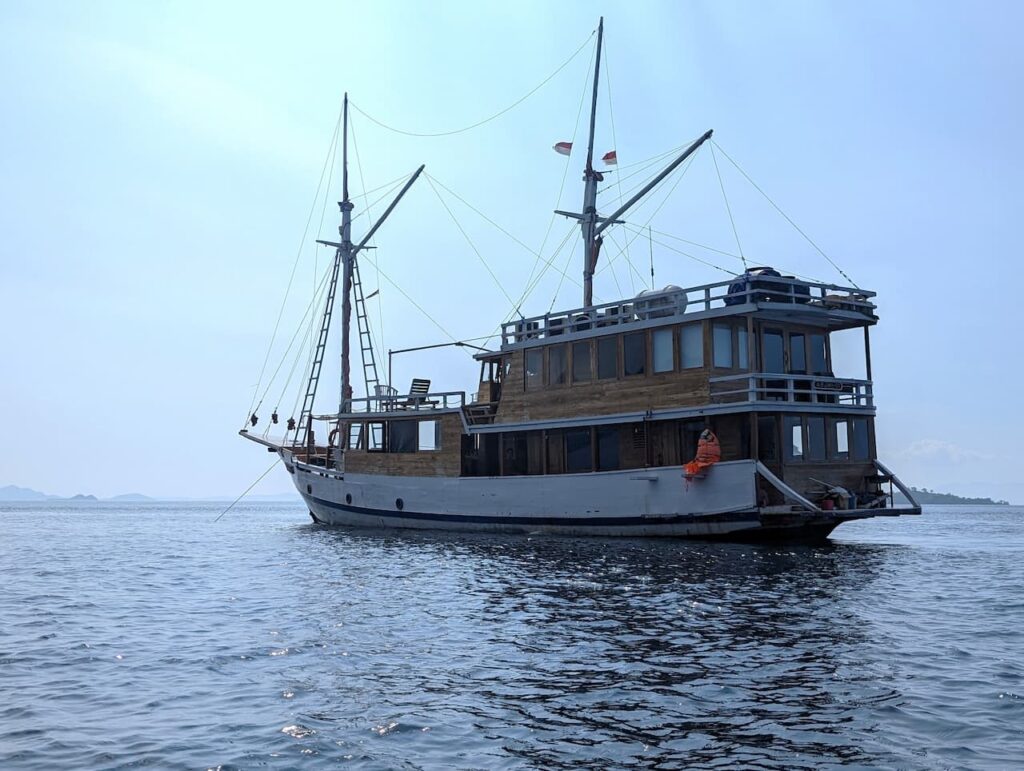
This is the main deck.
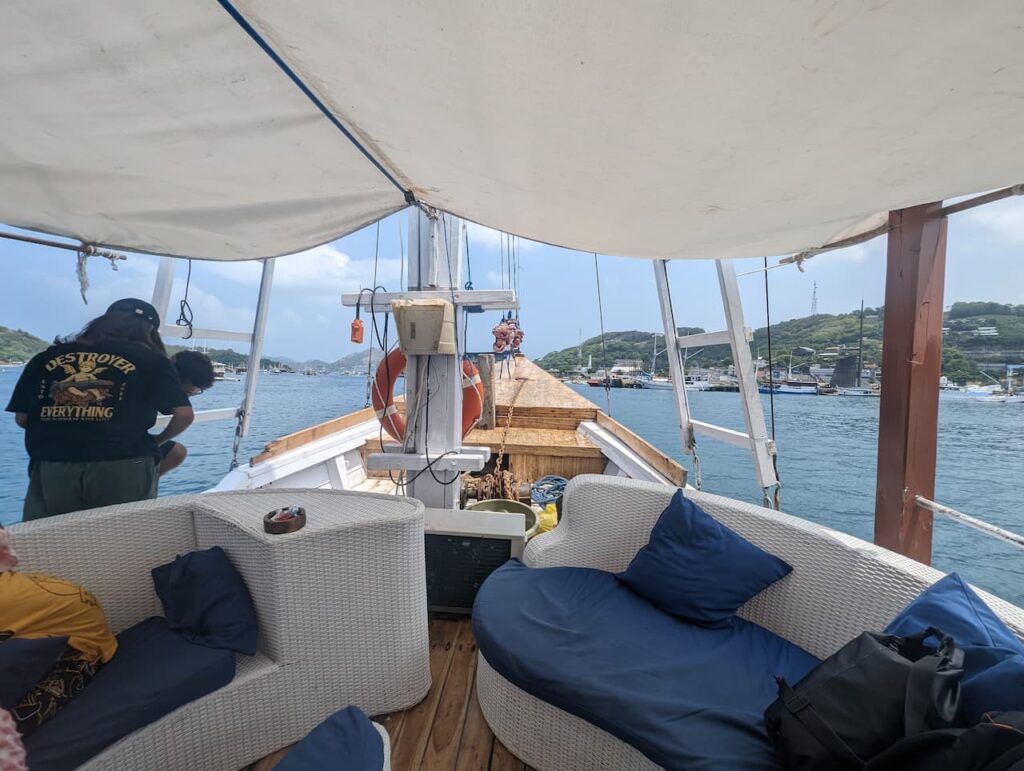
And it is a deck with great sun exposure.
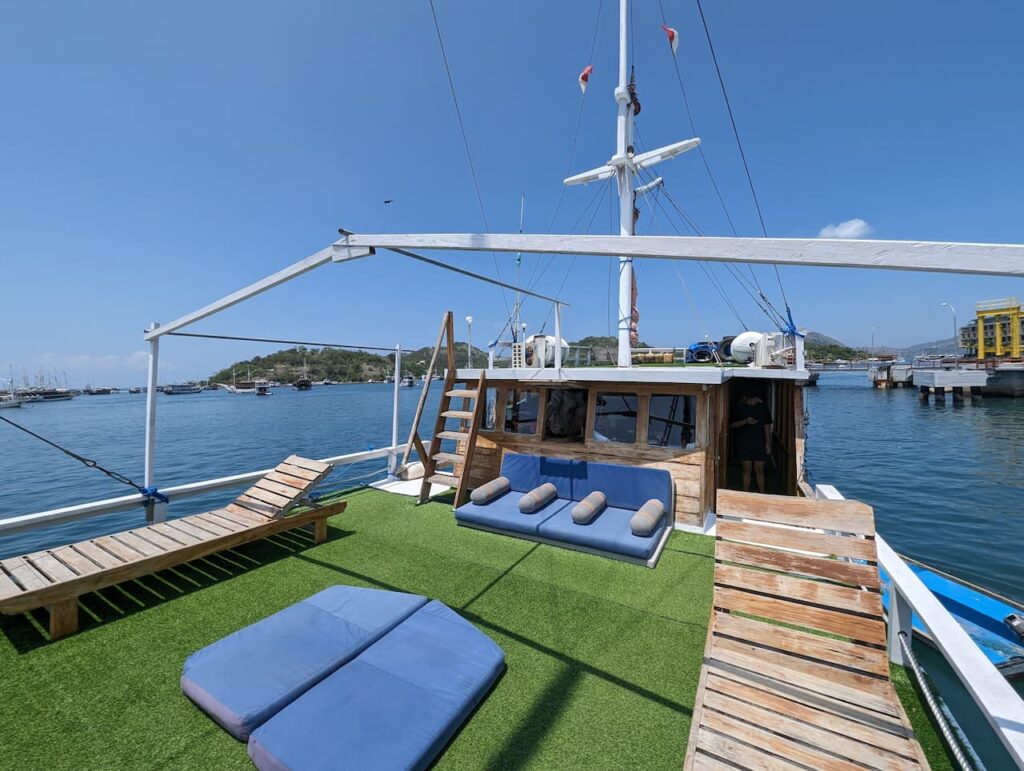
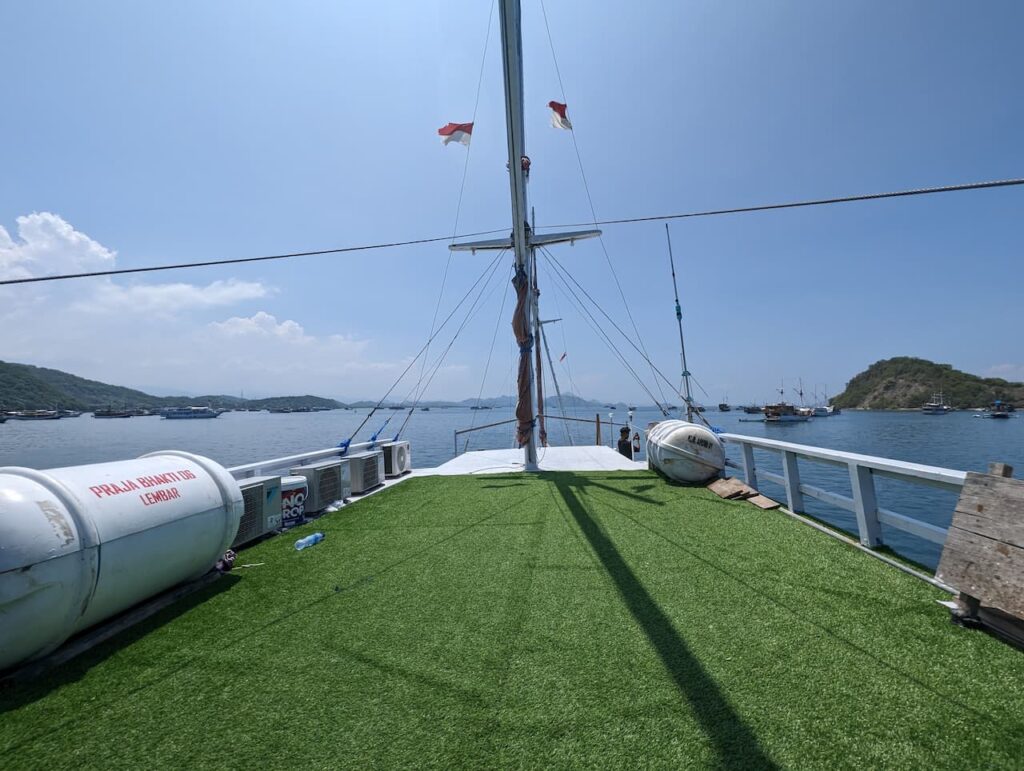
The accommodation was a private room, but since it was the cheapest option, it was located on the lower deck and quite cramped. However, as I only needed it for sleeping, it wasn’t a problem.
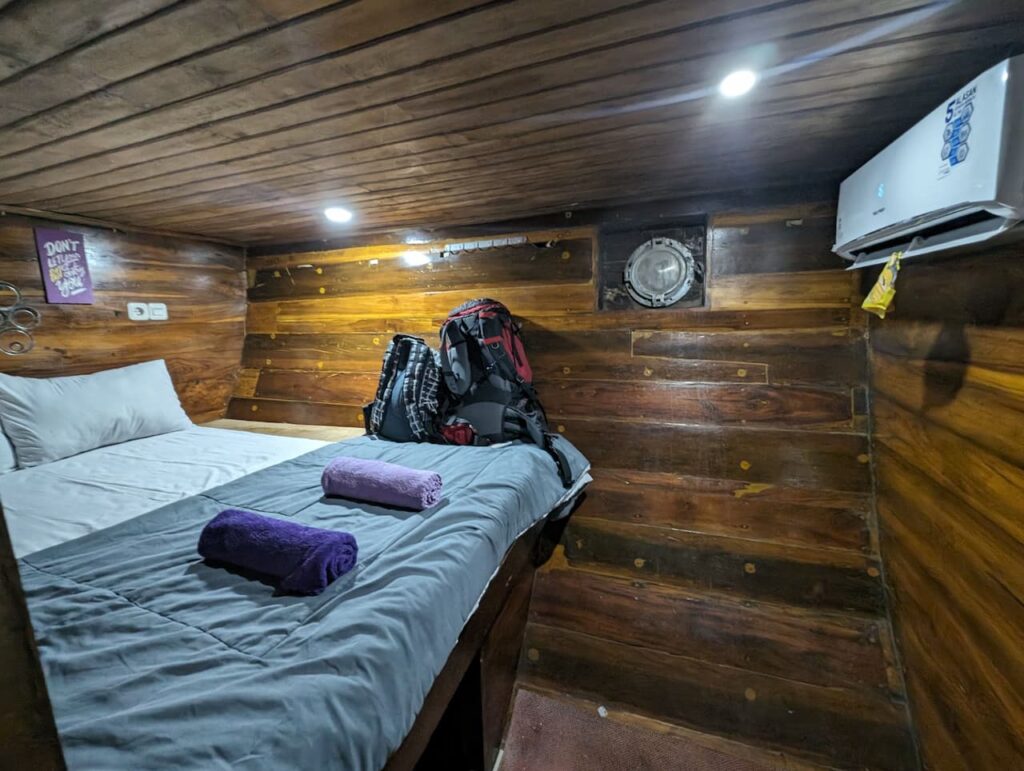
1st day
The tour started around 10 a.m. on the first day, departing from the pier on the main island. Generally, the tour company picks you up from your hotel. On the first day, we visited the following three spots.
Among them, Kerora Island left quite an impression on me, perhaps because it wasn’t originally one of the main destinations I was looking forward to on this trip.
- Kelor island
- Manjarite island
- Pulau Kalong
Kelor island
Kelor Island is a small island located right next to Komodo Island. It takes about 15 minutes to trek to the summit, from where you can enjoy a panoramic view of nearby islands such as Flores Island, Rinca Island, and Komodo Island. It’s a popular tourist spot for its breathtaking scenery.
The trail can be quite steep and unexpectedly difficult to walk, so I recommend wearing sturdy shoes like sneakers instead of sandals.
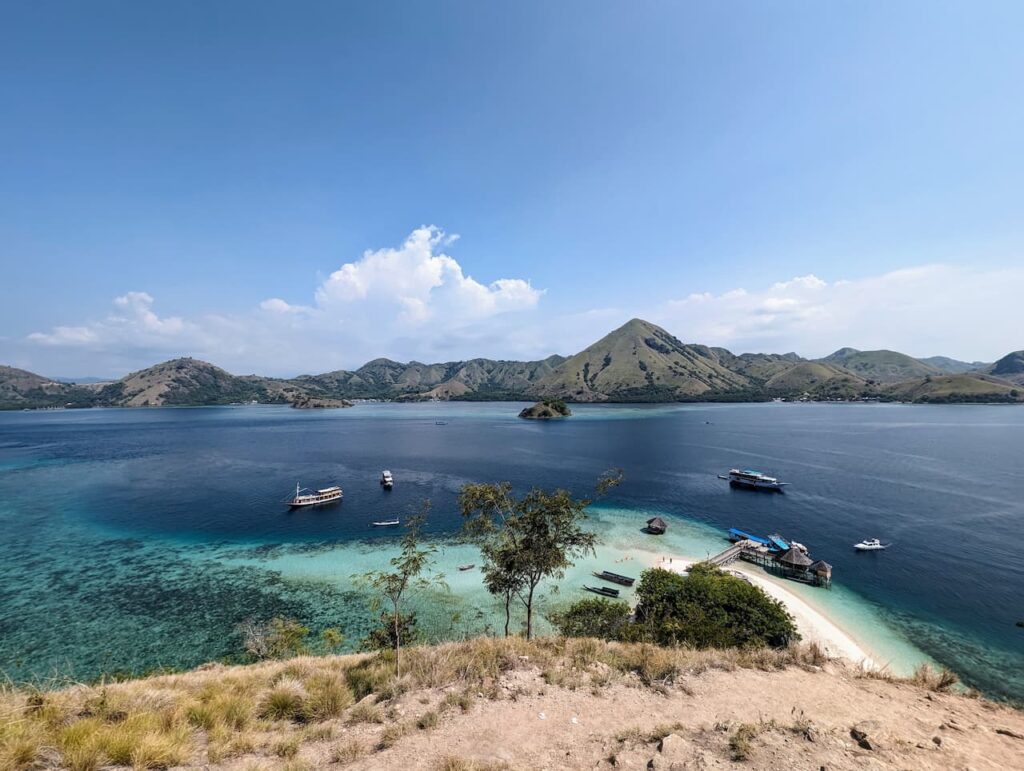
There are souvenir shops and light snack shops near the pier, so bring your wallet if you want to buy something.Although more expensive than Labuan Bajo on the main island, coconut juice and other drinks are delicious in this unique atmosphere.
Manjarite island
Next, we headed to Manjarite Island, a popular snorkeling spot. On the way there, we had lunch. On the boat, we generally ate breakfast, lunch, and dinner with other tour guests. The meals consisted of Indonesian grilled and stewed dishes, with a variety of options including curry, chicken, and fish dishes. The flavors were quite mild, and the seasoning seemed to be something that Japanese people would find quite easy to enjoy.
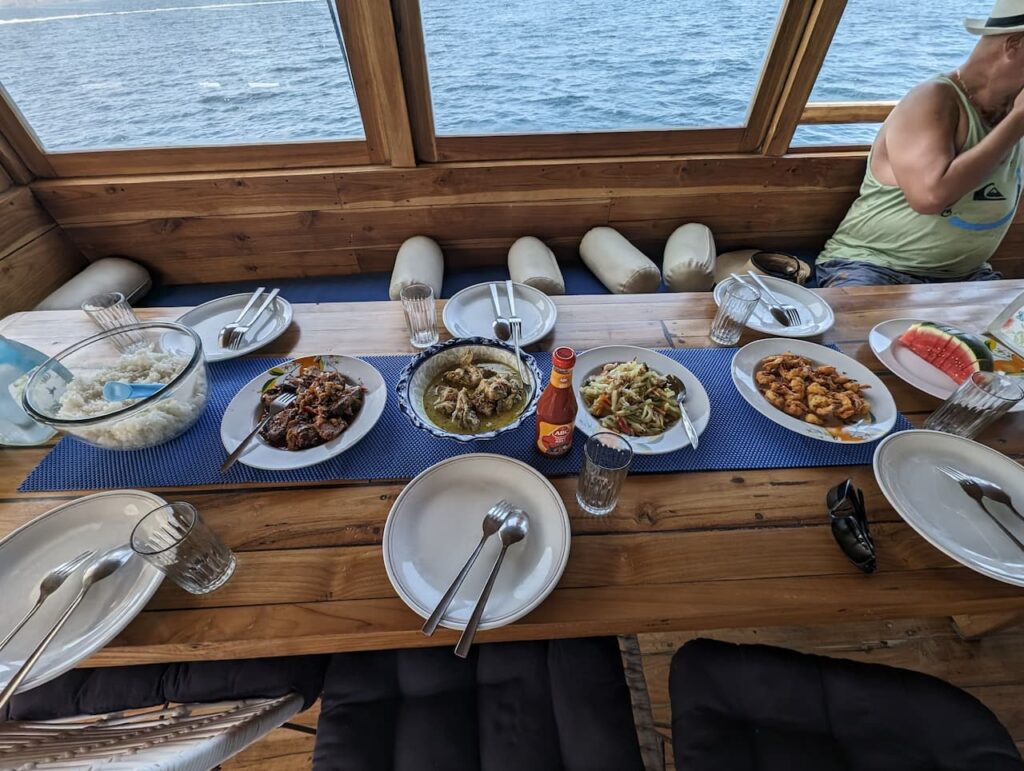
Manjarite Island is not yet developed for tourism, so there are no accommodations or shopping facilities—it’s simply a place to enjoy snorkeling. Unfortunately, when I visited, the weather was cloudy, and the visibility in the water wasn’t very good. The guide mentioned that lately, due to the island becoming part of the tourist route, more people have been visiting. As a result, some people have stepped on the coral, causing a lot of the coral to die, and the underwater scenery has become less beautiful than it used to be.
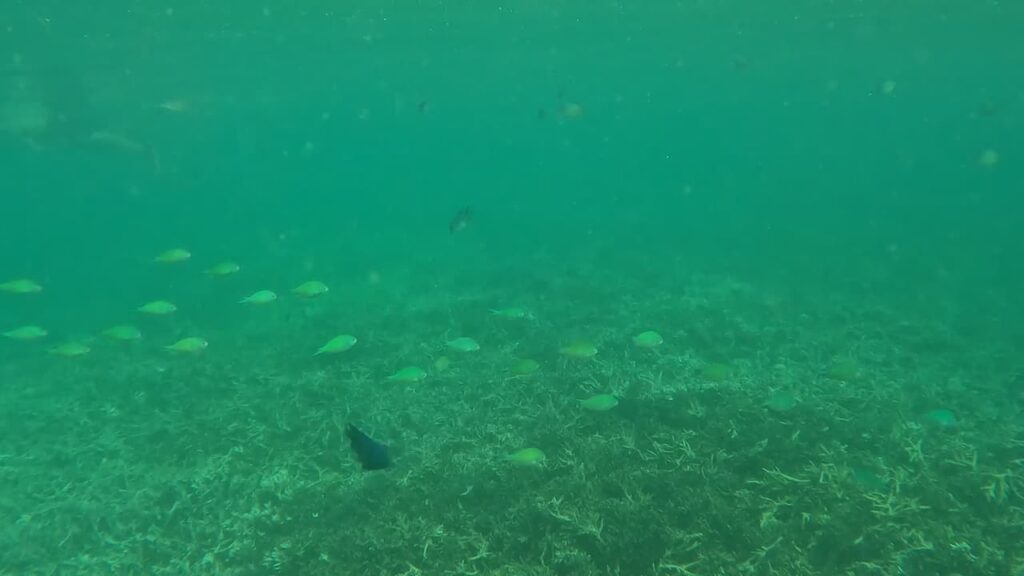
There was also a snorkeling tour on the third day, which was sunny and had very clear visibility, if you would like to see it.
Pulau Kalong
The last stop on the first day was Pulau Kalong, where we watched the massive migration of fruit bats and the sunset. Around sunset, for more than 30 minutes, thousands of bats fly out to gather fruit for food, creating an incredible sight. There are similar types of bats in Malaysia’s Mulu region, but while the bats in Malaysia live inside caves, the bats on Pulau Kalong live in the mangrove trees. It was a fascinating and unique experience.
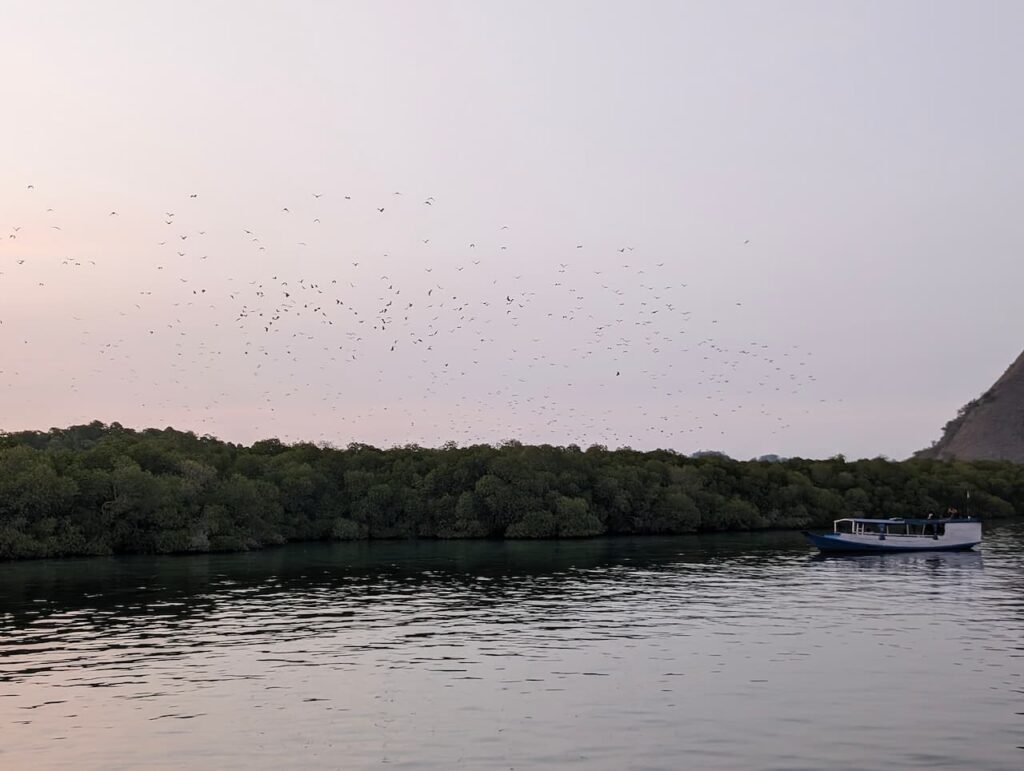
Finally, the day ended as we waited for dinner while enjoying the sunset.
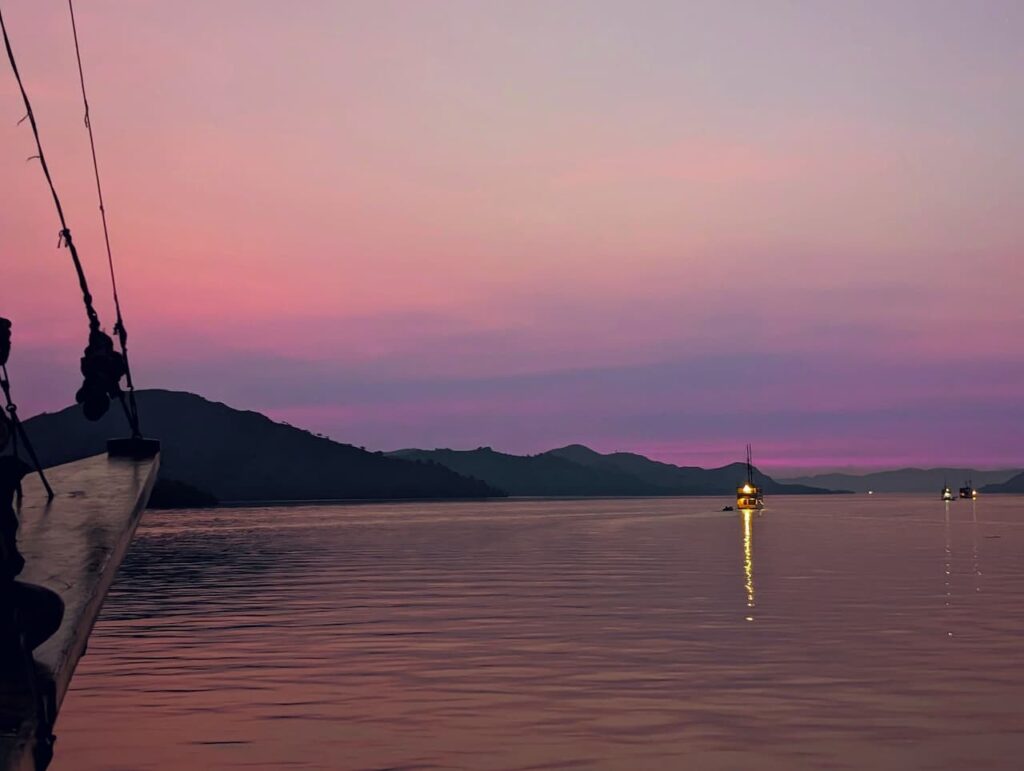
2nd day
On the second day, we woke up quite early and first went to Padar island to watch the sunrise.
- Padar island
- Pink beach
- Komodo island
- Takka Makassar
- Manta point
Padar island
Padar Island is the third-largest island near Komodo Island and is one of the highlights of this tour. To reach the famous viewpoint, often seen in tour promotional photos, you need to climb 867 steps to the summit. It took about 45 minutes to reach the top, but since the path includes sandy areas, I would definitely recommend wearing comfortable shoes like sneakers to make the hike easier. The view from the top is absolutely stunning and definitely worth the effort!

Since I visited at sunrise, I couldn’t see the blue color of the sea, but I was able to enjoy the rare and beautiful view of the island, nestled between two seas. There is an entrance fee to access the island, but fortunately, it was already included in this tour. It seems that you can also fly a drone there, but an additional fee is required for that. The scenery, especially at sunrise, made the experience unforgettable.
Pink beach
The beach known as Pink Beach is called Pantai Merah in Indonesia. As the name suggests, the sand on this beach has a distinct pink color that is visible to the naked eye, making it a globally famous beach. I didn’t know this before, but…
This Pink Beach in Indonesia is one of the seven pink sand beaches in the world. The reason the sand appears pink under the sun is due to microorganisms called foraminifera. These tiny creatures produce red pigments on the coral reefs, and when mixed with the white sand, they leave small red particles, giving the sand its beautiful pink color.
What’s also great is that drones can be flown for free here, and with the guide’s drone, group photos can be taken, allowing for a fantastic aerial shot of the beach.
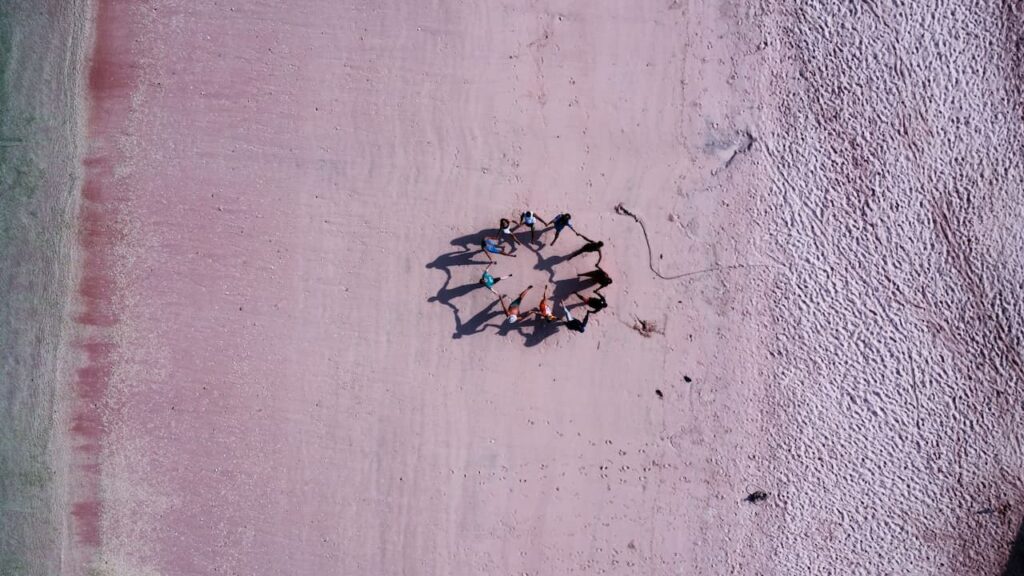
The area around Pink Beach is surrounded by stunningly clear blue waters when the weather is sunny. Unfortunately, there wasn’t time to go snorkeling here, but the water was so clear that it looked as though the boat was floating in mid-air. The photo was taken with a DJI MINI2, capturing the beautiful transparency of the water. It was an amazing sight, and even though we couldn’t snorkel, the view itself made the visit worth it!
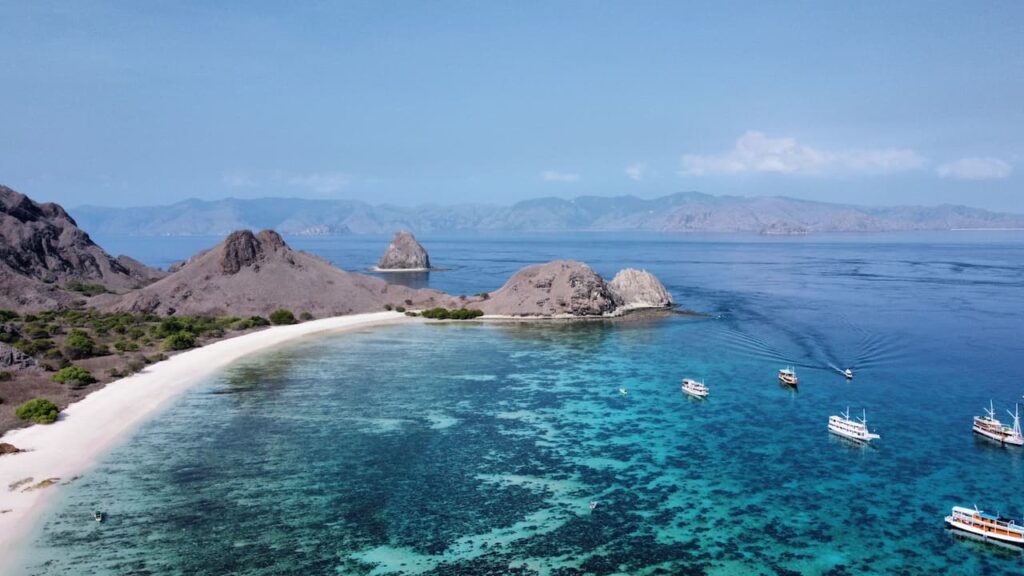

Komodo island
Next was my long-awaited visit to Komodo Island, a UNESCO World Heritage site, home to the famous Komodo dragons. Please note that there is an entrance fee not included in the tour price, and it can only be paid in cash. For foreigners, the fee is 600,000 Indonesian Rupiah (about 38 USD), but for some reason, perhaps because I was part of a group tour, I was able to pay the local rate of 300,000 Indonesian Rupiah (lucky!).
Komodo dragons are only found on Komodo Island, Rinca Island, and part of Flores Island, making their habitat quite limited. The total population is around 2,500, which is relatively small. However, Komodo Island offers a great opportunity to see many Komodo dragons. That said, they are usually either sleeping or pretending to sleep, so chances of seeing a moving Komodo dragon are rare.
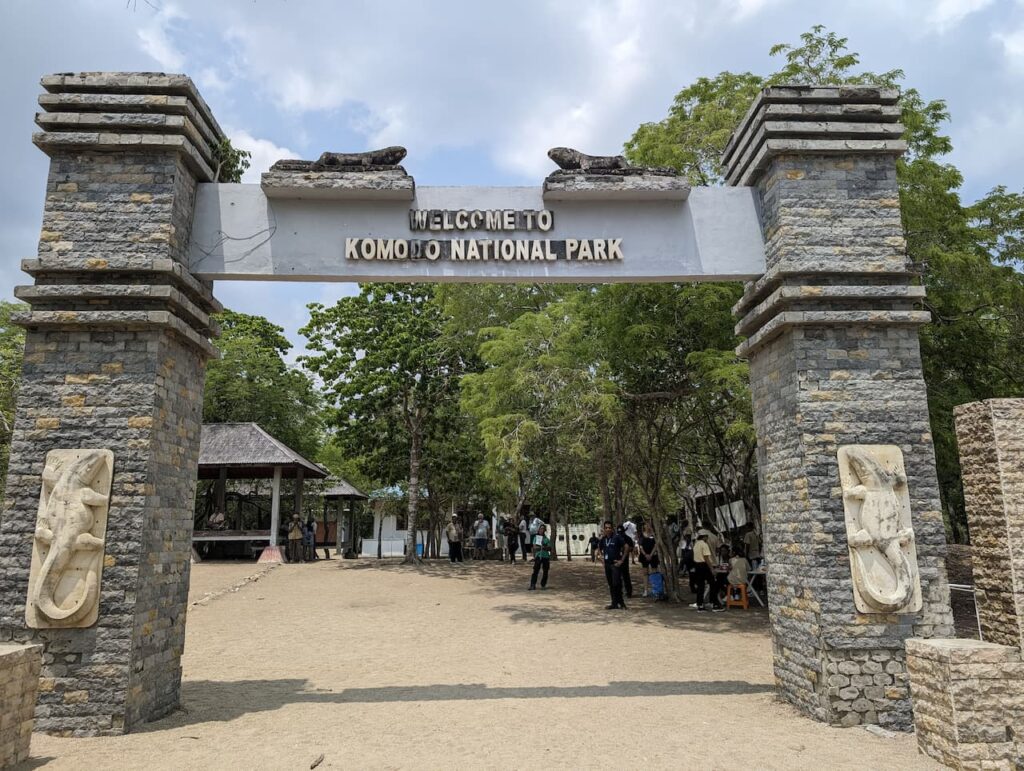
The guide will take photos using perspective tricks, making it look like you’re touching the Komodo dragon, but you’re always warned to stay at least 1 meter away. If you get too close, the Komodo dragon might mistake you for food and could attack.
All the Komodo dragons on the island were large, with some reaching up to 3 meters in length and weighing around 130 kg. It’s amazing to see them up close, but safety is definitely a priority!
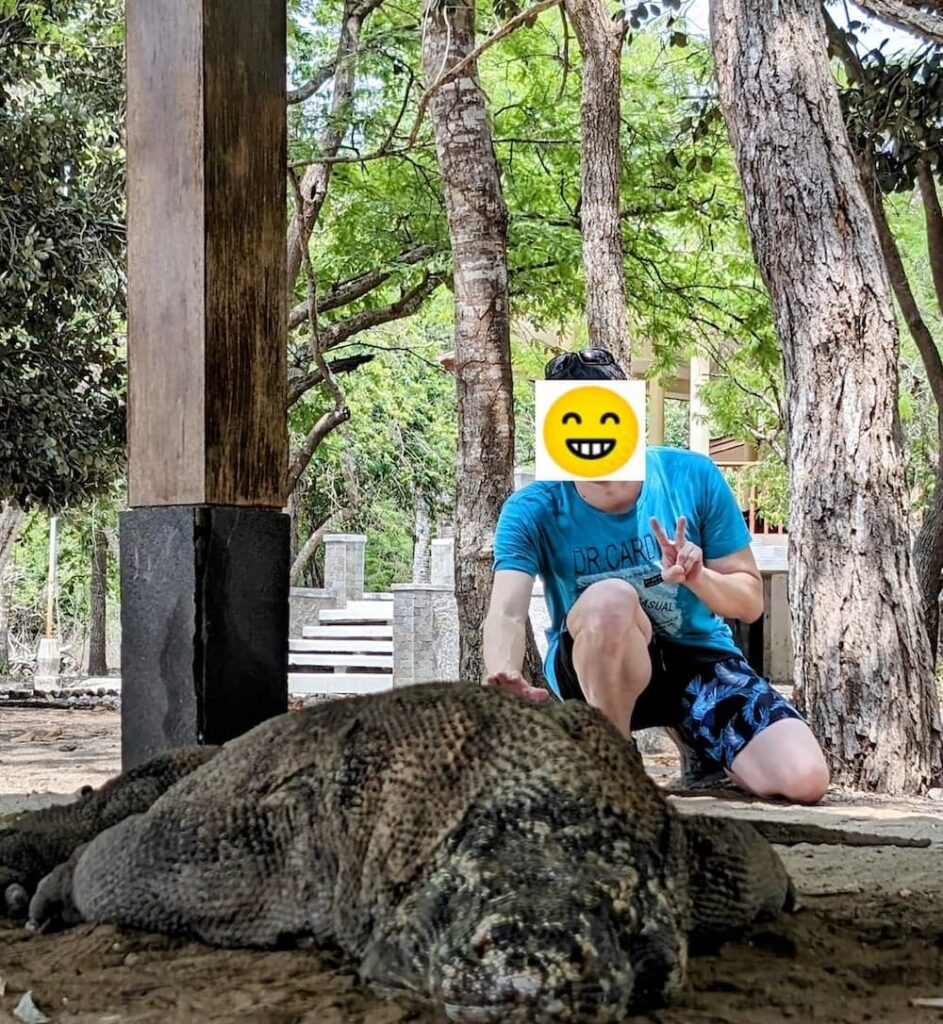
You must be accompanied by a guide (ranger) to visit the national park on Komodo Island.The same goes for day tours.
I was lucky enough to see a Komodo dragon on foot.It was quite dynamic.
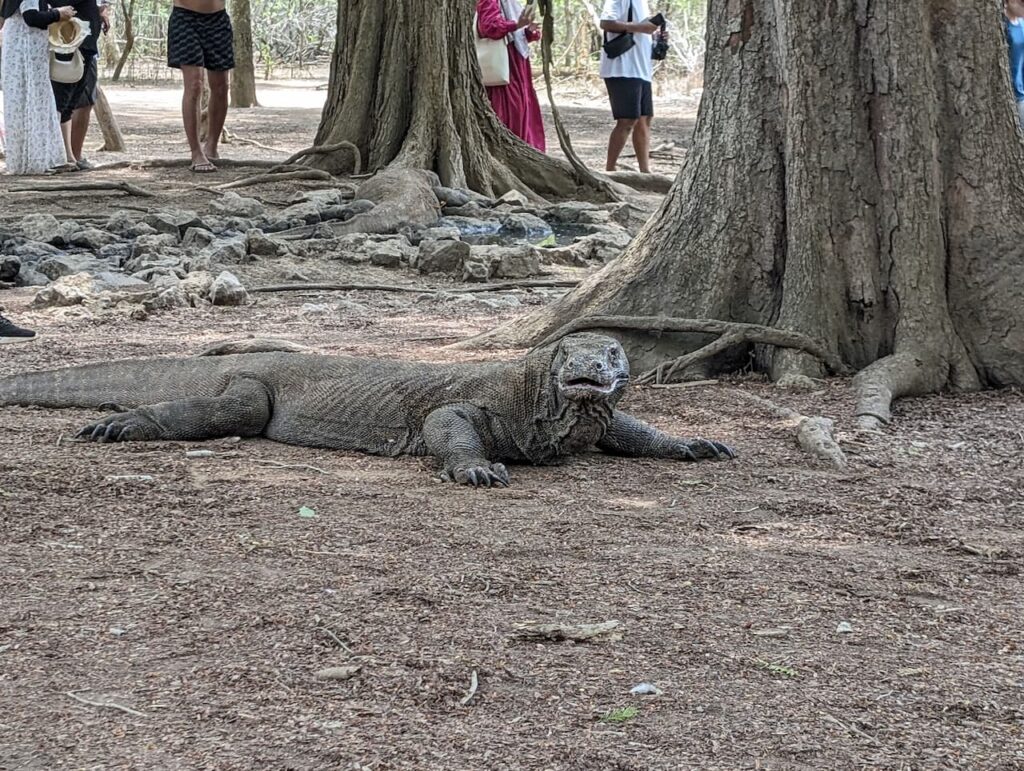
Another island where you can see Komodo dragons is Rinca Island, but on Rinca, you can’t get as close to them as you can on Komodo Island. If you’re short on time and can only visit one island, I highly recommend choosing Komodo Island for a closer encounter.
However, Rinca Island does have the advantage of fewer tourists, so if you prefer a quieter, less crowded experience, it might be worth considering. Ultimately, it depends on what kind of experience you’re looking for!
Taka Makassar
Taka Makassar is a small island within Komodo National Park, and its shape is unique, resembling a “magatama” (a curved, comma-shaped ancient Japanese bead). As seen in the photo, the island is quite small, but it is surrounded by clear blue waters, offering a picturesque, isolated setting. The island is only visible during low tide, as it disappears at high tide, making it a “phantom island.”
Just like the other locations, drones can be flown here for free, which allows for some incredible aerial shots of the island and the surrounding waters.
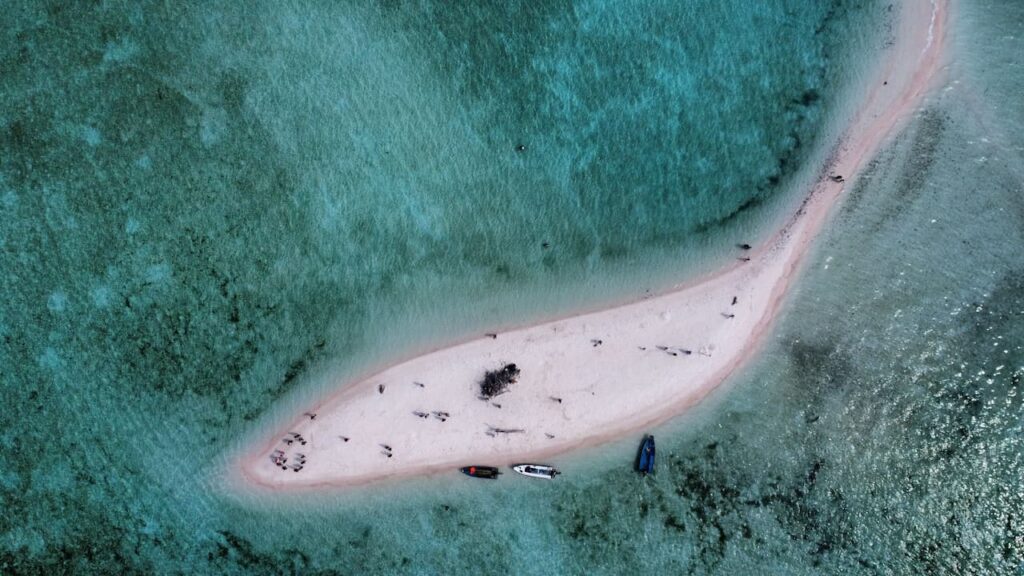
Manta point
Right near Taka Makassar Island, there is a spot known as the “Black Manta” area, where you can see these magnificent creatures. I was fortunate enough to see many black mantas during my visit.
It was such a magical experience to watch the mantas swim gracefully and even have the chance to swim alongside them. It truly made me feel lucky and happy to share the water with such beautiful creatures.
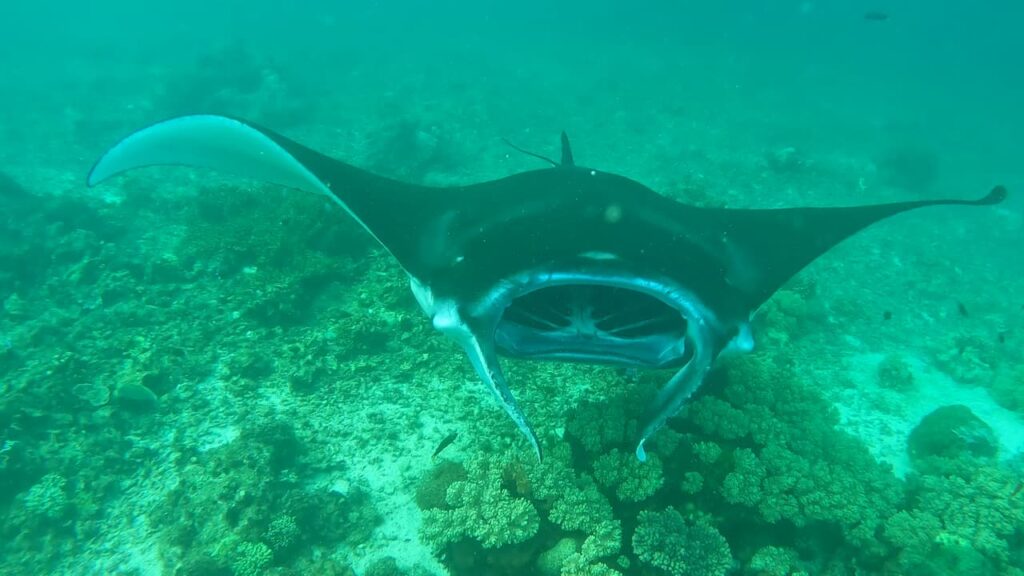
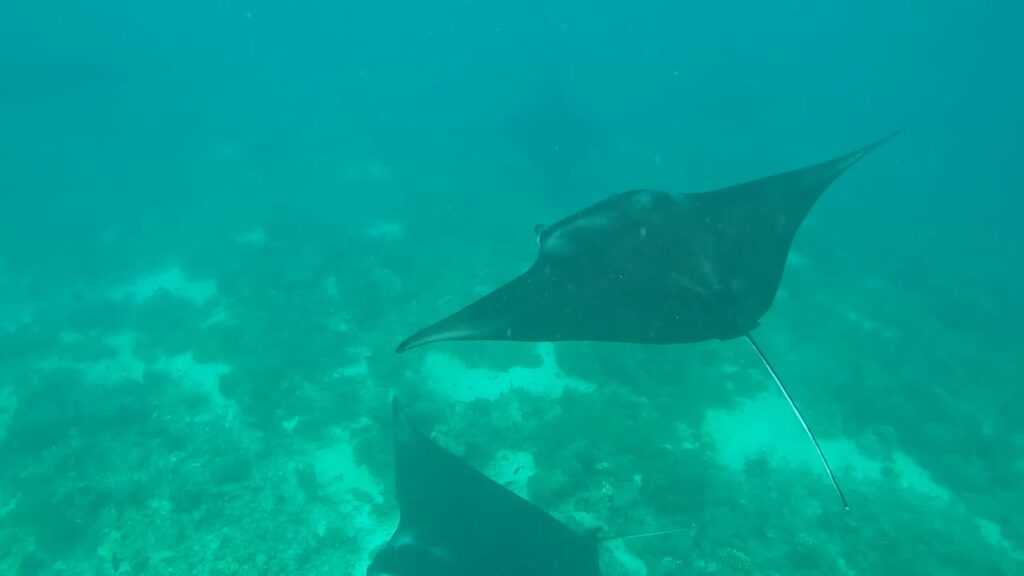
Unfortunately I couldn’t capture it on video, but I did see a man-eating shark.
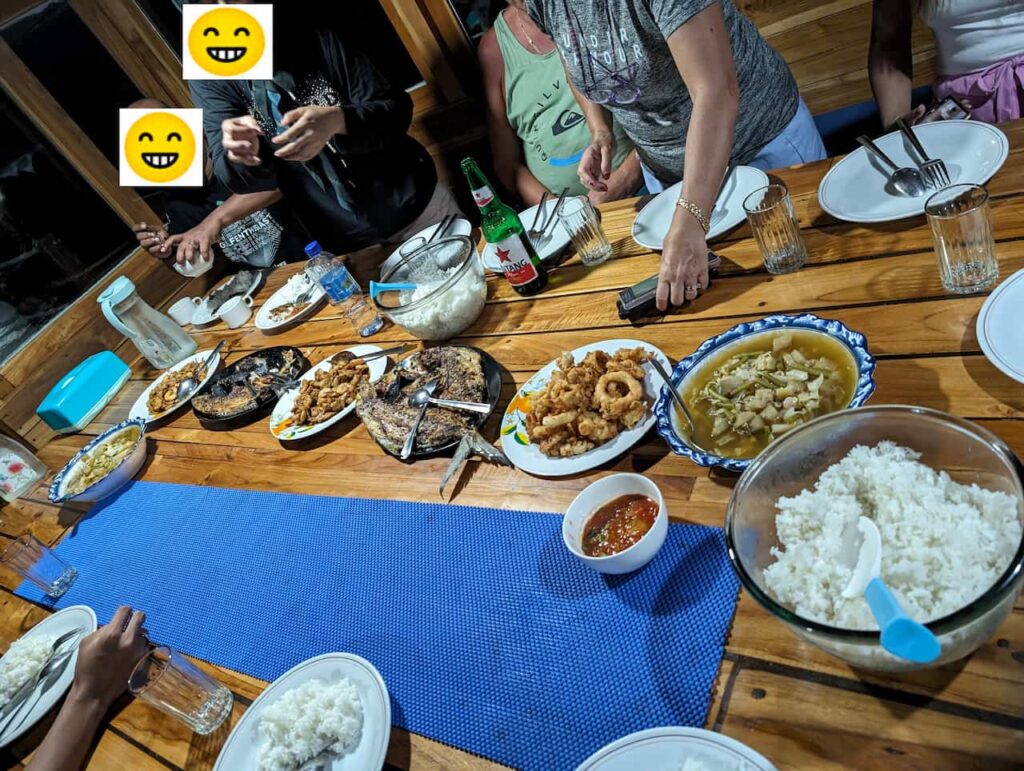
The final dinner was a memorable one. All the tour guests gathered around one large table to eat, and I have to say, the grilled fish that day—Red snapper grill —was absolutely delicious! It was the perfect way to end an amazing journey, sharing a great meal with everyone after such a fantastic trip.
3rd day (last day)
On the final day, we had Kanawa Island as our only snorkeling spot. The sea was incredibly calm, and snorkeling from the pier allowed for a crystal-clear view of the coral reefs and colorful fish. It was a great opportunity to redeem my first day’s snorkeling experience, and I was fully satisfied with the experience—it might even rival snorkeling in Okinawa!
The stay was long enough that you could also consider trekking around the island if you’re up for it. It’s a beautiful place to explore both underwater and on land!
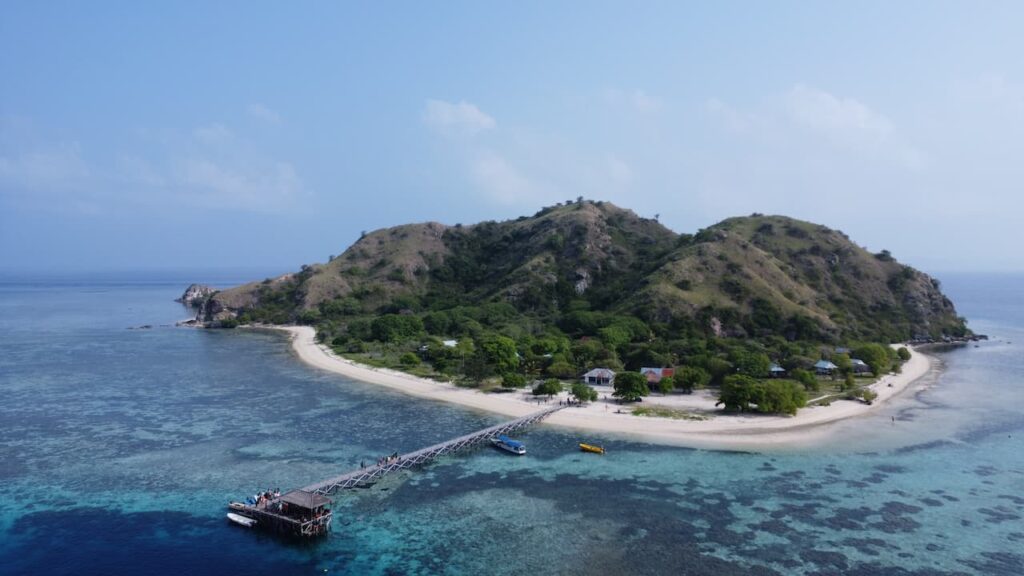
On the right is the famous angelfish here.I saw it for the first time!
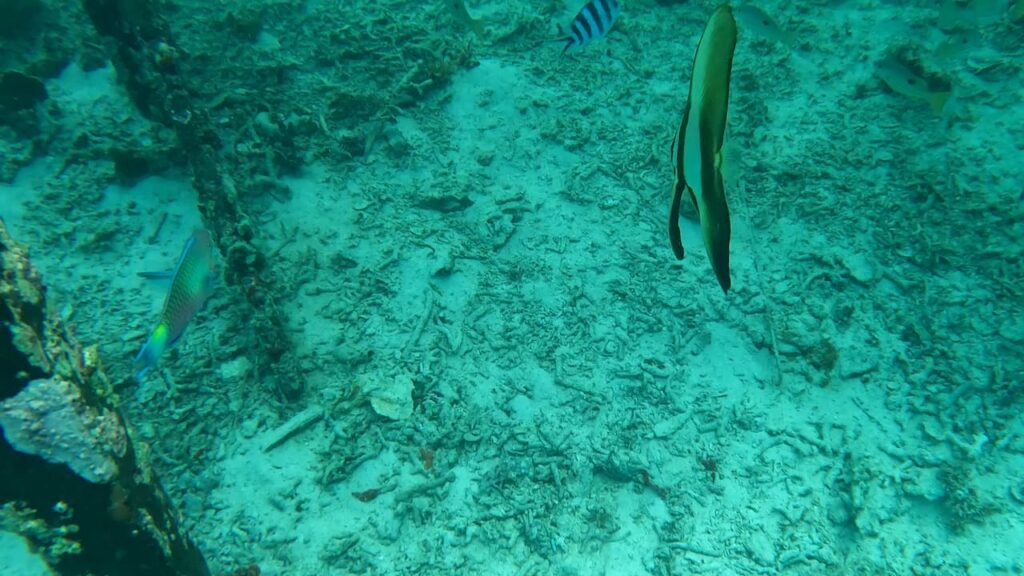
Even when venturing a bit offshore, the visibility remained remarkably clear, and the number of fish was significantly higher. It was an incredible snorkeling experience, with vibrant marine life all around. I was truly amazed by how pristine and lively the underwater world was!
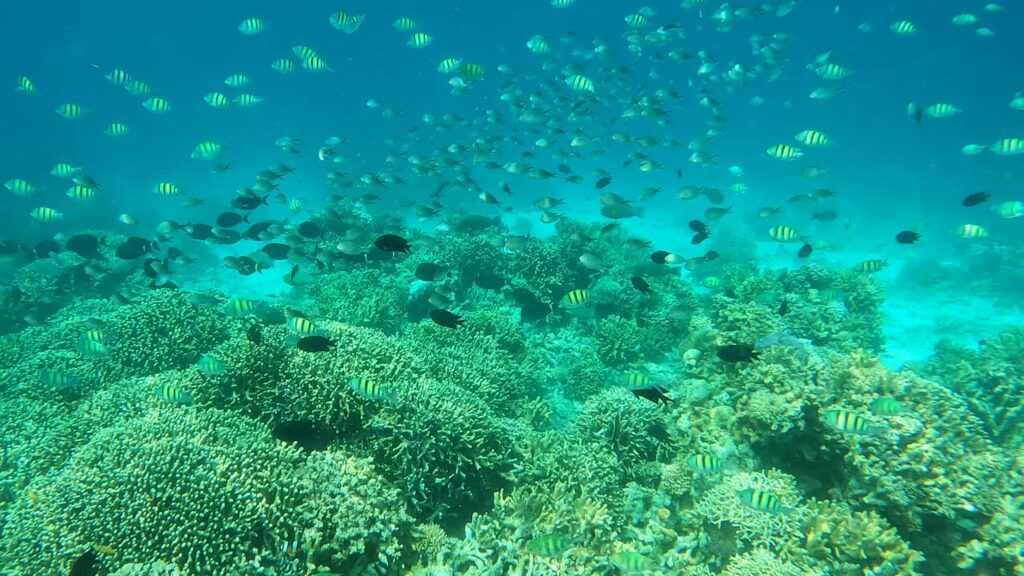
Bonus activity
If you wish, you can also experience jumping off the rooftop deck. The day before, we jumped from the bow, but diving from the rooftop deck was much more thrilling and refreshing! The height added an extra adrenaline rush, making it an unforgettable experience.
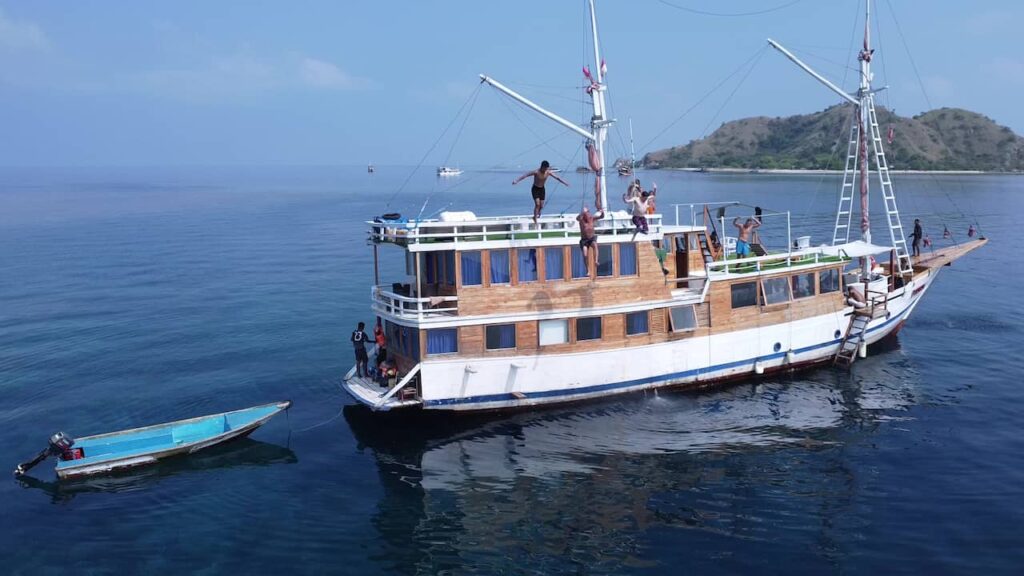
All in all, this overseas trip was an absolute dream come true. I finally got to see the legendary Komodo dragons and swim with manta rays—experiences that left me completely satisfied.
If you’re interested in a Komodo Island tour, I hope this article serves as a helpful reference for planning your own adventure!
Equipment used underwater
The photos taken in this report were taken using GoPro photo and video recording. If you are considering a high quality action camera, please consider GoPro.
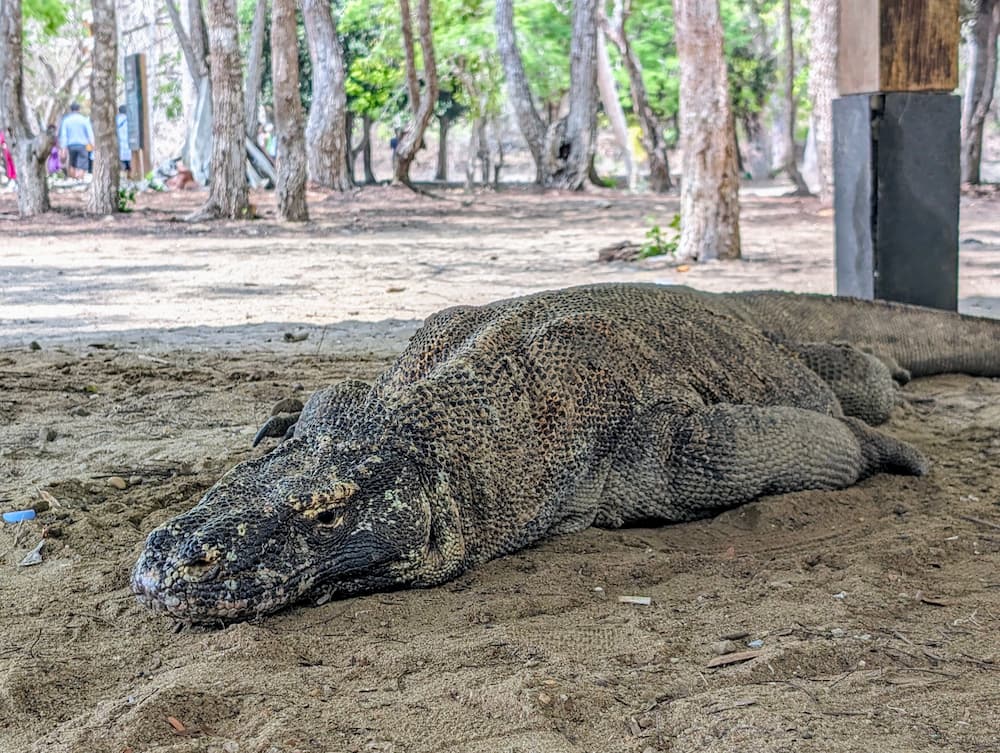

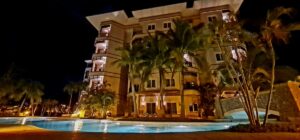
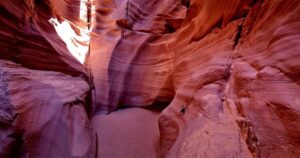
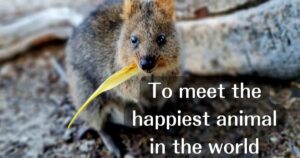
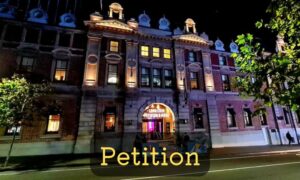
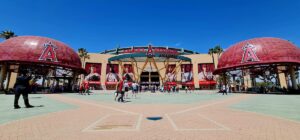
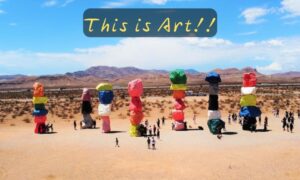
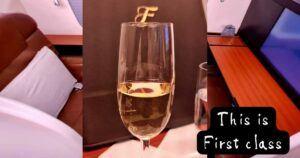

Comments